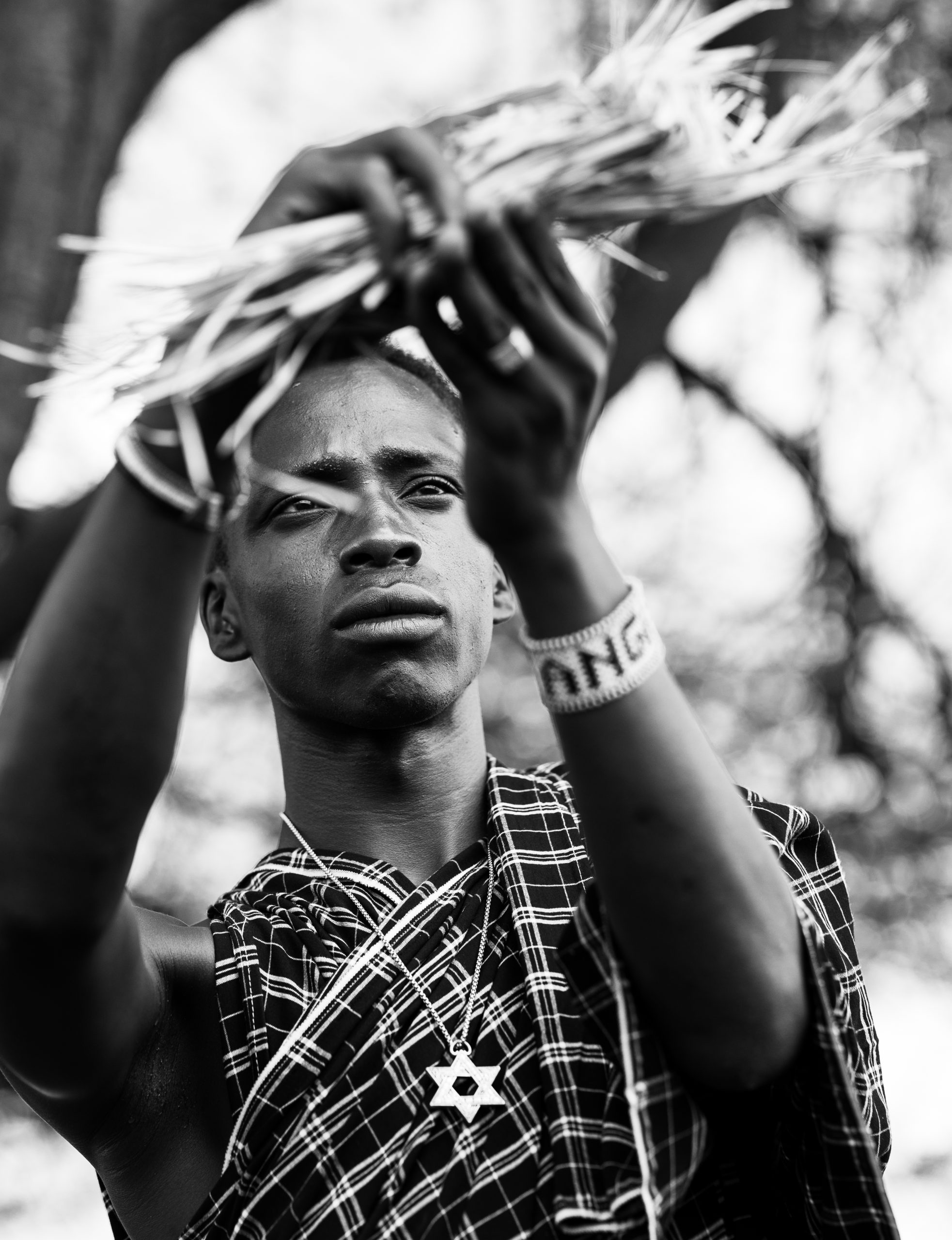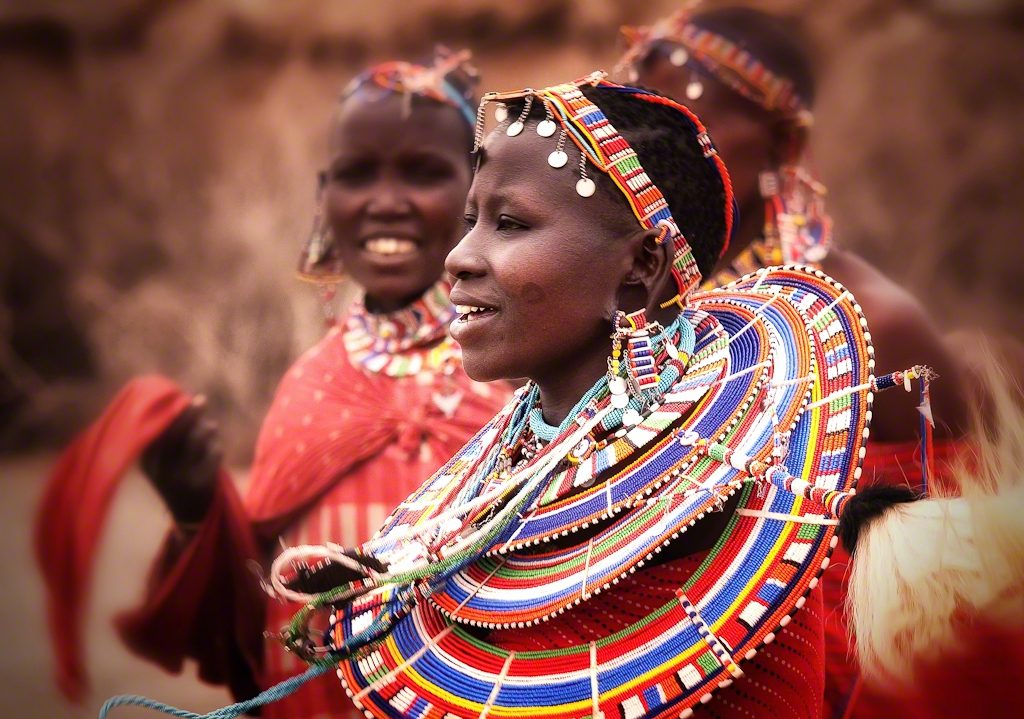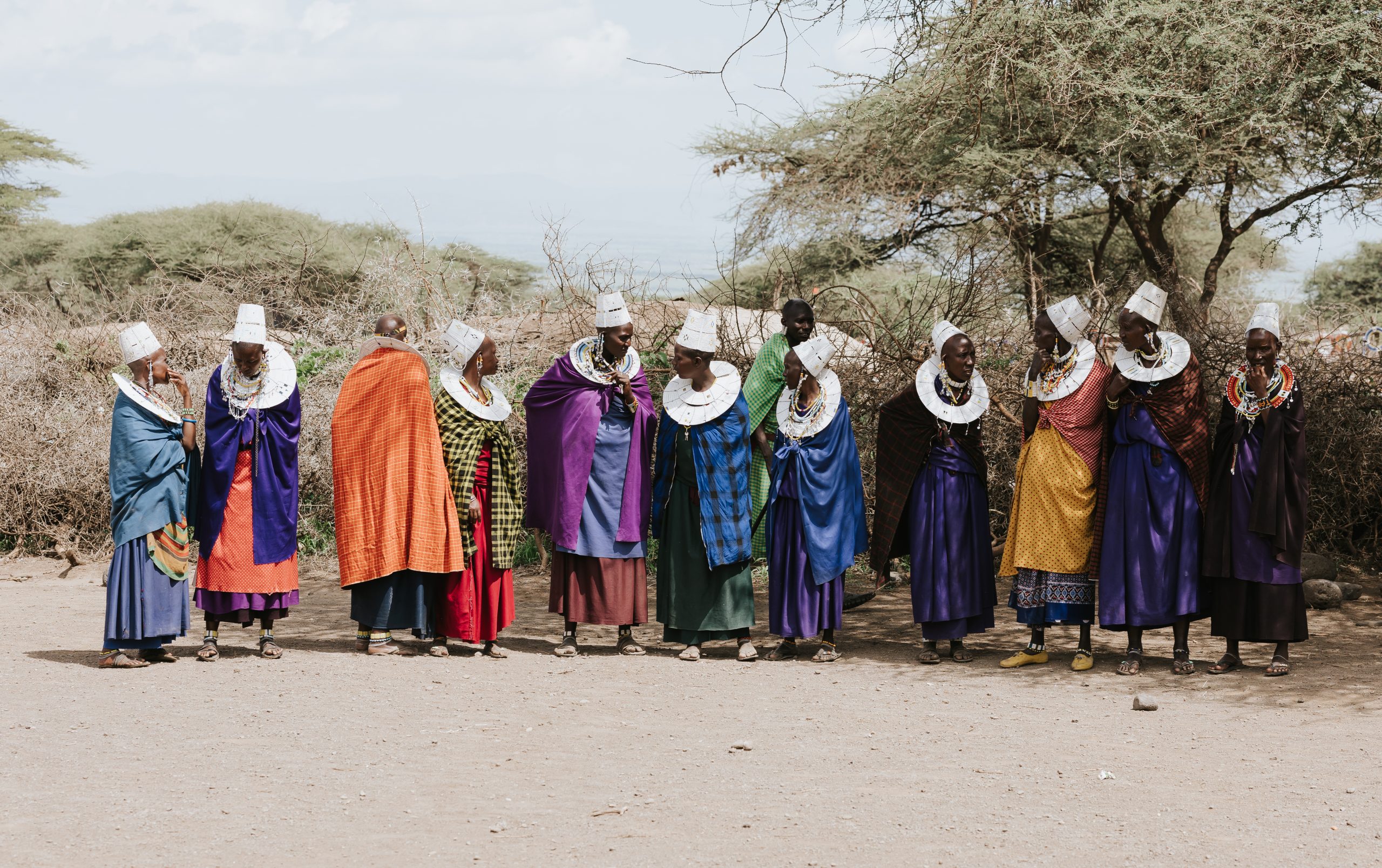
The Maasai maintain a nomadic lifestyle centered around cattle herding. These cattle, primarily cows, are their main source of sustenance: they provide milk for drinking and fermenting, and occasionally, cows are slaughtered for meat—though this is done sparingly. Additionally, animal dung is used to coat their homes, while leather is turned into footwear and ropes, hides into clothing and blankets, and other byproducts like horns, bones, and hooves are crafted into tools and ornaments. Cows are considered sacred and hold a central role in their daily life and religious rituals.
Maasai society is structured in a hierarchy that includes different groups: warriors (morans), family heads, and elders. The warriors are young men responsible for protecting the community and its livestock, undergoing a rigorous initiation process. Family heads manage household affairs and make community decisions, while elders oversee ceremonial matters and the preservation of traditions. Additionally, marriages in the tribe are polygamous, with the groom paying a dowry to the bride’s family in cattle—usually cows or goats.
The Maasai live in circular settlements called manyattas, which consist of traditional homes known as bomas. These houses are built using branches, mud, and cow dung. The manyattas are typically enclosed by a fence to protect the livestock, which is fundamental to their way of life. These dwellings are simple yet effective, adapted to their environment, and reflect the Maasai’s nomadic lifestyle, as they relocate based on seasons and the availability of grazing land for their cattle.
The Maasai are easily recognizable by their traditional clothing, which features bright, colorful robes—typically in shades of red, blue, and orange—symbolizing different aspects of their culture. They often adorn themselves with elaborate beaded necklaces, rings, and other ornaments made from materials like bone, copper, and wood. These decorations are not just for aesthetics; they also signify social status and tribal identity. The Maasai wear coiled copper anklets and armbands as part of their traditional jewelry, and their attire plays a crucial role in tribal ceremonies and celebrations.
The Maasai practice a monotheistic religion, worshipping a supreme god known as Enkai or Ngai. In their worldview, the land and cattle are sacred and essential to their survival. They believe their god entrusted them with these gifts, fostering a deep spiritual connection with both. Their worship rituals emphasize harmony with nature and reverence for ancestral beliefs. The Maasai also hold profound respect for the life cycle of cattle, as they are vital not only for material sustenance but also for spiritual fulfillment.


Maasai Boma Visit
This immersive experience takes you inside a traditional Maasai “boma” (homestead), where you’ll witness how the Maasai people coexist with wildlife in their territory. You’ll have the unique opportunity to observe sacred worship rituals, learn about their customs, and participate in vibrant welcome dances.
During your visit, you’ll discover:
The Maasai’s nomadic pastoral lifestyle
Their deep spiritual and practical connection to cattle
Social and religious structures that remain vital today
Traditional construction methods of their homes
A highlight of our safari itineraries, this cultural encounter offers authentic insight into one of Africa’s most iconic tribes.
Price: 50−50−80 per person for the cultural visit and associated activities
Note: This experience may be combined with village walks or craft market visits depending on location.
© 2025 Sensation of Africa | Terms and Conditions| Privacy Policy